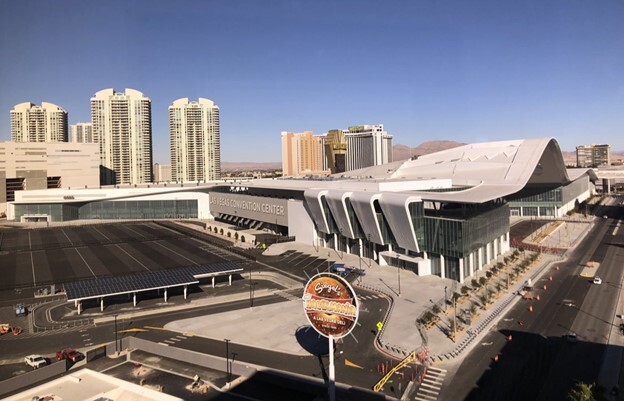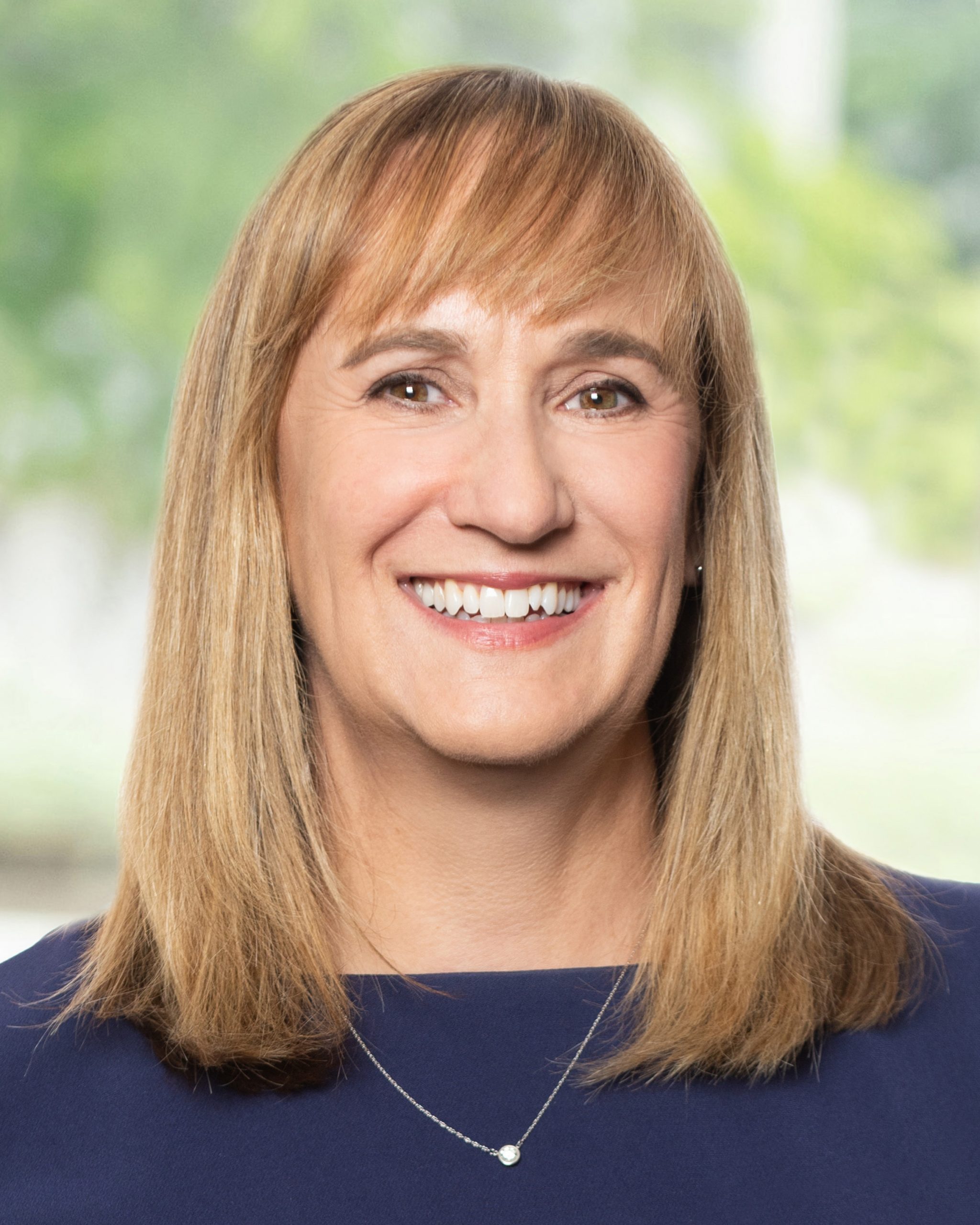
What’s happening at CES 2022 in January? We spoke with Jean Foster, Senior Vice President, Marketing and Communications at the Consumer Technology Association (CTA), to find out.
This year CES is a hybrid event, a mix of in-person and virtual. How will this be different from last year’s online-only event, and from previous in-person events?
Jean Foster: It’ll be very different, but it’s an evolution of what we’ve been doing over the last few years. CES 2021 might have been all digital, but we were already making a lot of our content available to audiences that couldn’t be in Las Vegas back in 2019 and 2020. So while this year, the main focus is obviously on the Las Vegas in-person event, we also recognize that it’s going to be a smaller in-person event in 2022. There are going to be people who can’t travel, even if they wanted to. So, in addition to the live event in Las Vegas, we’ll also be creating the digital platform again for those audiences that can’t participate in person. The difference for the online audiences in 2022 is that they’ll be able to see what’s going on live in Las Vegas, whereas last year everything was completely virtual, so we’re hoping to bring the excitement of Las Vegas to the digital audience that can’t be there.
What will the on-the-ground experience in Las Vegas be and how will that be streamed to the digital audience specifically?
JF: So, for those who attend in person, they’ll be at a physical show that, albeit smaller, will have the trade show floor. We already have 1,600 companies signed up and we’re still very much in selling mode and new companies are signing up every day. We saw a bump when the Biden Administration announced the November easing of travel restrictions, so some of those country groups and delegations, both from Europe and Asia, that weren’t sure if they’d be able to participate, have now committed to participating as well. I think we’ll see that number continue to go up, but again, as we’ve said from early on, it’s not going to be the same size as events we’ve had in the past. The last in-person event we did in 2020 and we’re typically at about the 4,000 mark. We’re comfortable saying we can get to 1,500 or 2,000 this time.
GM will be unveiling the new Chevy Silverado during its keynote. We also have an extensive conference program, as we always do, and that of course will be deeper for the people who make it in person because it’s the real hands-on experience that everybody knows and loves about CES.
Even so, for the digital platform, we’ll be able to bring that audience the keynotes and some of the conference sessions, which will be available initially live online only. There will be ways for the online audience to participate in a lot of the conference sessions. And there will be an exhibitor part of the digital platform, so people will be able to go in and book appointments and video chat with companies, to learn more about their products.
Will the show layout be the same in terms of halls and venues?

JF: The exciting thing about this year is that we’re moving into the new West Hall facility at the Las Vegas Convention Center. I think we’re one of the first two shows to use that space, and it brings on 600,000 square feet of new space in this beautiful new hall. That alone is bigger than most convention centers in the U.S.. As a result, we’re able to move a lot of our exhibits over there.
For example, our vehicle and transportation area, which has been growing at CES over the years, is going to move to West Hall because it looks like this is going to be the biggest year yet for the vehicle and technology section.
The Digital Health category is also growing very quickly, so we’re moving that from the Sands to the North Hall, which is where the Vehicle Tech area used to be. So the extra square footage not only does allow us to accommodate growing categories, but it also lets us create more space in general. So, we’re able to widen the aisles to create more space between the individual exhibits themselves, which will alleviate some of those busy points of intersections.
You’re also going to see us continue to use a lot of outdoor space and outdoor exhibits, like the Central Plaza at the Convention Center. Google has confirmed, and BMW will be coming back to do its racetrack there.
CES will look different as we accommodate for the environment that we’re now living in. Overall, you’ll see a more spread-out show.
Will the Sands and Aria still be used for CES?
JF: Yes, Eureka Park will be back at the Sands for all the startups, as well as Smart Home, so those are aspects of the show that people are used to seeing that will be set up they have always been. The C-Space at the Aria looks like it’ll be bigger than it has been in the past, at least in terms of the exhibitors that have signed up to participate. And we have some new programming there around NFTs and digital currency.
The only space that we won’t be using again this year is the Westgate, which we used for a couple of years as an overspill location when we expanded areas like Smart Cities, but now that we have this bigger footprint with the new West Hall, we’ll be able to bring more to the actual convention center itself.
Is there a limit to attendees this year?
JF: We’re not limiting it, because we think it’ll naturally be smaller anyway, so we’re not putting a label on it, but we are looking at how do we actually just create that extra spacing so that there’s enough for people to move around and have social distancing on the show floor and in conference sessions.
What’s the protocol in terms of COVID?
JF: There will be a vaccine mandate for this CES. We’ll be partnering with CLEAR to manage the validating process in the U.S, so we won’t be holding onto any of the data. And we’re working to identify a third party to handle that internationally. We’re also looking to see if there are any situations that would enable someone with COVID antibodies to attend. At the moment, there’s no FDA test for antibodies, so that’s still TBD, but it’s under consideration.
As of now, the local laws in Las Vegas require that masks be worn inside, so we’ll continue to track that. We’d recommend that people be prepared to wear masks inside, but we’ll make a policy decision on that in early December.
CES today is covering so many more categories such as NFTs, Space, and Food Tech. Can you tell us a little more about what constitutes Space and Food Tech in the context of CES and the consumer electronics industry?
JF: We’re always trying to bring in new elements of technology. One of the coolest new activations is going to be from a company called Sierra Space. It has a contract with NASA to take goods to the International Space Station. The company is going to bring in one of its space planes, which will be on the show floor. You’ll also see a lot of established brands such as Intel, Qualcomm, and Canon talking about space as part of their activations.
In terms of Food Tech, we’ll definitely have companies like Impossible Foods, which will be launching new products, but there is also hardware. There’s a company called Beyond Honeycomb that has an AI-driven robot that will replicate any recipe, but also John Deere that focuses on the agricultural aspect, so you’ll see an array of technologies under the Food Tech umbrella.
And in terms of cooking or kitchen appliances, we’ll be seeing a lot of exhibitors with smart appliances and smart kitchens in different parts of the show, including smart home and food tech.
What about some of the most classic, core CES categories like TVs?
JF: All the big bellwether companies – Sony, LG, Panasonic, Samsung, and so on—are back and will be in Central Hall. The TVs and the displays are always such a cool factor of the show. And it’s the same for these companies; it’ll be the first time that they’ll be making live product launches in two years, so there will be some great connecting of people and some big announcements.
Beyond the traditional hardware CE and appliance categories, what other topics will be of interest to retailers?
JF: I think one of the most interesting and surprising stories to come out of C-Space are the new ad agencies and new ad platforms from companies like Walmart and Amazon. C-Space is a slightly different type of show because the companies there don’t have a product, per se; they’re there to do business. Imagine, this is the first time that this community has come together in a couple of years. CES is so important to this industry because it hasn’t really had a platform for a couple of years; they usually go to Cannes Lions, but that hasn’t happened for a couple of years. It’s the same with the Automotive category. It’ll be one of the first times the automotive industry is coming together in person.
So, the pandemic upended everything, accelerating some industries and arresting others. Which technology sectors and technologies grew and innovated the most as a result of the pandemic?
JF: We’ve seen a huge acceleration of innovation in smart homes and healthcare. The healthcare side of our business is growing. Abbott Labs will be doing a keynote. This is the first time we’ve had a digital healthcare company on the stage at CES — and that’s because it’s now a tech company and, like a lot of other companies, it’s choosing the CES stage to almost rebrand itself.
Digital health has experienced a lot of growth that was pandemic-driven. The category doesn’t just focus on physical health and wellness, but also mental health and digital therapeutics, as well as more issues such as more equitable access to health. This is one of the biggest areas we’ll be focusing on. We’ll also be focusing on the use of technologies that are predictive in situations like this. I’d say healthcare has probably seen the most innovation lately — that’s what we’re seeing from our members, from the show floor, and from the conversations that we have on Capitol Hill.
One of the biggest indicators for innovation is our CES Innovation Awards. This year, we had more than 1,800 entries; that’s the highest number we’ve ever had. For CES 2021, I think we had about 1,500, so it’s a significantly larger number for 2022. I just think we’ve seen an explosion of innovation over the past couple of years.














